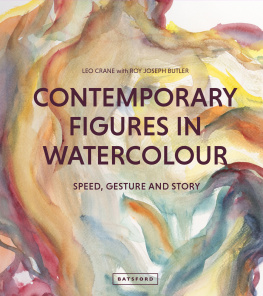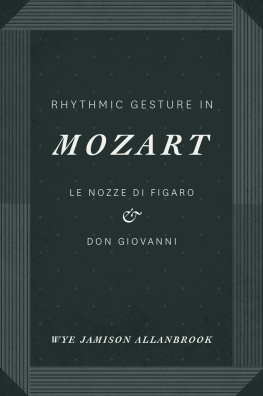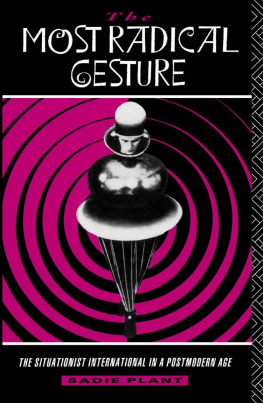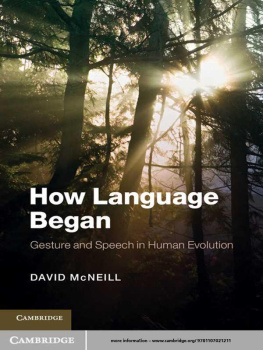THE PHILOSOPHY OF GESTURE
The Philosophy
of Gesture
Completing Pragmatists
Incomplete Revolution
GIOVANNI MADDALENA

McGill-Queens University Press 2015
ISBN 978-0-7735-4612-7 (cloth)
ISBN 978-0-7735-4613-4 (paper)
ISBN 978-0-7735-9788-4 (ePDF)
ISBN 978-0-7735-9789-1 (ePUB)
Legal deposit fourth quarter 2015
Bibliothque nationale du Qubec
Printed in Canada on acid-free paper that is 100% ancient forest free
(100% post-consumer recycled), processed chlorine free
Publication of this book has been supported by grants from the University of Molise and Difendiamo il futuro.
McGill-Queens University Press acknowledges the support of the Canada Council for the Arts for our publishing program. We also acknowledge the financial support of the Government of Canada through the Canada Book Fund for our publishing activities.
Library and Archives Canada Cataloguing in Publication
Maddalena, Giovanni, 1971-, author
The philosophy of gesture : completing pragmatists incomplete revolution / Giovanni Maddalena.
Includes bibliographical references and index.
Issued in print and electronic formats.
ISBN 978-0-7735-4612-7 (bound). ISBN 978-0-7735-4613-4 (paperback). ISBN 978-0-7735-9788-4 (ePDF). ISBN 978-0-7735-9789-1 (ePUB)
1. Pragmatism. 2. Identity (Philosophical concept). 3. Act (Philosophy). I. Title.
B832.M14 2015 | 144.3 | C2015-904763-3 |
C2015-904764-1 |
To my friends who suffer.
Freedom is a complete gesture as well.
Crystal clearness, such as we justly require in mathematics, in law, in economics, is in philosophy the characteristic of the second rates. The reason is that the strongest men are able to seize an all-important conception long before the progress of analysis has rendered it possible to free it from obscurities and difficulties.
C.S. Peirce, Contributions to The Nation 2, 84, 1894
Contents
Foreword
FERNANDO ZALAMEA
Universidad Nacional de Colombia
Since Greek times, philosophy has always been attentive to surprise, novelty, and originality, hoping to offer a better understanding of the world thanks to the use of new perspectives, both sensible and intelligible. On the other hand, a fine appraisal of the practice of gestures provides a welcome bridge between the two main rationales of intelligence: heart and reason. Giovanni Maddalenas The Philosophy of Gesture thus enters at the very core of the most crucial problems of philosophy, and, for that matter, of mathematics (through Grothendiecks yin-yang geometrization), music (through Mazzolas ongoing gesture theory), art (through Kiefers installations), or literature (through Valrys exploration of inventiveness in the Cahiers). The main appeal of Maddalenas book comes from his effort to look at a philosophically central issue from its borders, using non-standard, alternative tools of thought: a profusion of synthetic patterns, an understanding of the topological logic of Peirces existential graphs, a look to Grossmans literature, and a personal, wonderfully innovative (and may I say, Italian) blend of semiotics, phenomenology, and metaphysics. Freshness Plasticity Life. If we later point out the many new treatments in Maddalenas book, we certainly have first to thank him for the freshness that The Philosophy of Gesture provides in the often-sclerotic land of academic philosophy.
In produces additional arguments (mathematical gestures, logical modalities, Peirces continuum) in order to explain the core of the new definitions, and their eventual applicability in philosophy.
After opening new grounds and perspectives for synthetic reasoning, Maddalena focuses in elaborates on conditions of creativity (with wonderful literary examples in Tolkien and Melville), where some connections with Maddalenas previous works on ethics and normativity are explored.
tackles questions on morality and education from the viewpoint of the advocated philosophy of gesture. Here one can see the young scholar truly moved by life itself, longing for a better practice of human kindness, along a spiritual path that Maddalena also explores in his daily behaviour through his religious convictions. Peircean at heart, Maddalena combines all experiences of human knowledge and sensitivity, either mathematical, philosophical, semiotic, ethical, mystic, or literary. The complete panorama of human endeavor is pursued by a true visionary, who hopes to encode parts of it in complete gestures. As Borges would tell us, the venture is necessarily doomed to fail, but the essential action consists in trying to produce the code: Maddalenas very attempt is a new form of knowledge on which further roads will be built.
Beyond the many original views presented in The Philosophy of Gesture, the book is in fact particularly valuable for the open questions it offers to the reader. A section on Conclusions and Further Studies reinforces such venues, which in fact were hinted at all along the book. Compared with the extraordinary development of analytical philosophy in the twentieth century, what one may call a synthetic, complementary approach is still in its infancy, despite a Peirce, a Florensky, a Grothendieck. Maddalenas text underlines the importance of searching for a new paradigm for the polarity analysis/synthesis, which the Italian scholar resolves through his new approach related to a central dialectics in knowledge: change and identity. Maddalenas definition and development of complete gestures, and their application to the understanding of literary narratives, are unprecedented contributions to the (thankfully) blurring intersection of mathematics, phenomenology, semiotics, and literature. In fact, knowledge needs to enter, with new tools and with a brave disposition, the muddy space of real life, far away from the supposedly crystalline waters of analytic philosophy. As a third way, beyond analysis and synthesis, Maddalena mentions the need to construct a horotics (following Roberto Perry), a systematic study of the borders and frontiers between the traditional opposites. Another fascinating path will be the elaboration of some sort of a posteriori metaphysics, a wonderful contradiction on which Maddalena has been thinking since his previous book (Metafisica per assurdo, 2009).
Logics are changing (beyond classical logic, intermediate categorical logic, the logic of sheaves, and the logic of paraconsistency allow us to understand better the idea of creative, partial contradictions) and our very ideas of number and space (through Grothendiecks revolution: schemes and topos) should quickly transform our usual, rather static forms of knowledge. In that evolving, dynamic world which has long affected mathematics, semiotics, and literature, Maddalenas The Philosophy of Gesture will be considered in the future, with due perspective, as an important contribution that will have opened in turn the more conservative bunker of philosophy.
THE PHILOSOPHY OF GESTURE
Introduction
THE SYNTHETIC DRIVE OF PRAGMATISM
Long since Immanuel Kant wrote the Critique of Pure Reason, the real watershed of modernity, philosophers have tried either to complete his critical project or to reject it. Even more than Ren Descartes, Kant compelled future philosophers to take radical standings, whether for or against his own. This is because Kants project reflects and gives form to the entire mentality of the contemporary world. Kant was right in saying that his critical assessment was a Copernican revolution. In comparison, Descartes revolution simply ameliorated the old scholastic tradition to which it was opposed. As a matter of fact, many thinkers have shown that Descartes is ambiguous even in rejecting scholasticism. You can still read his work as a completion of what was said before him. One can take him as really reassessing the scholastic tradition in new ways. You cannot do the same with Kant; when the Copernican revolution started, modernity took its contemporary form. Kants is not an amelioration, but instead a coup dtat on philosophical mentality and reasoning. This book aims to provide a pragmatist alternative to some crucial aspects of Kants philosophy. This alternative has not been explored yet within the contemporary philosophical landscape, not even by classic pragmatists who often involuntarily accepted aspects of Kants legacy.
Next page










